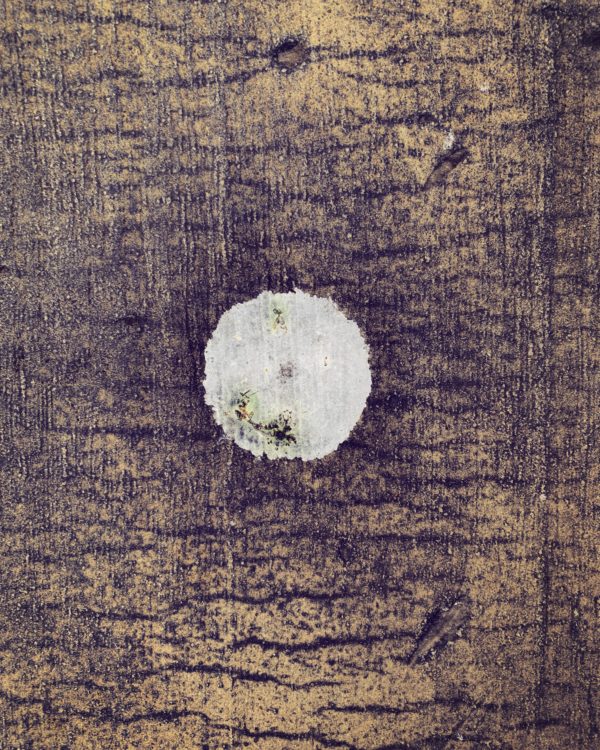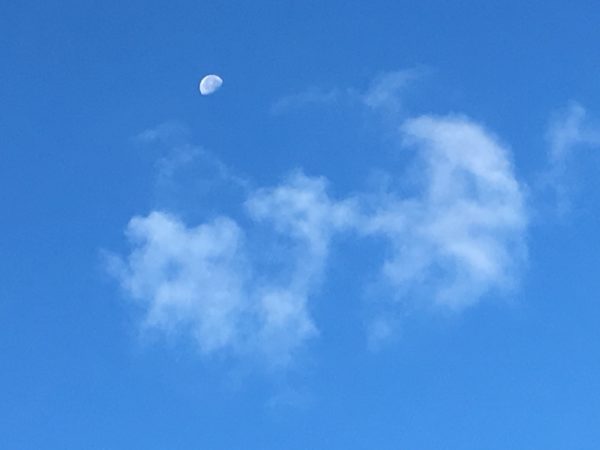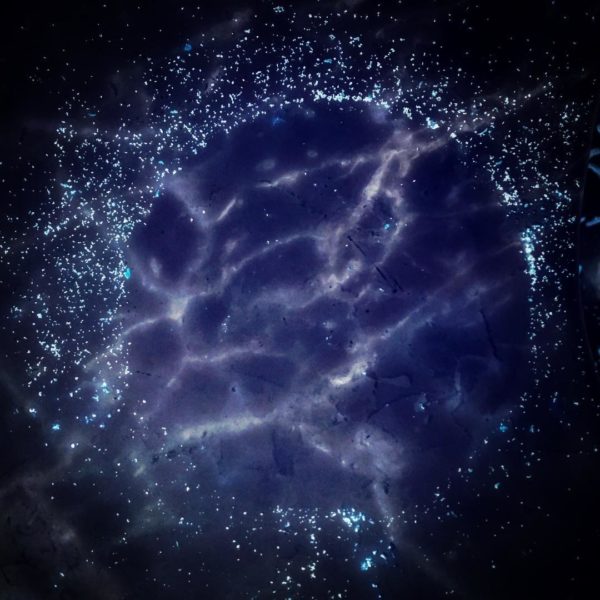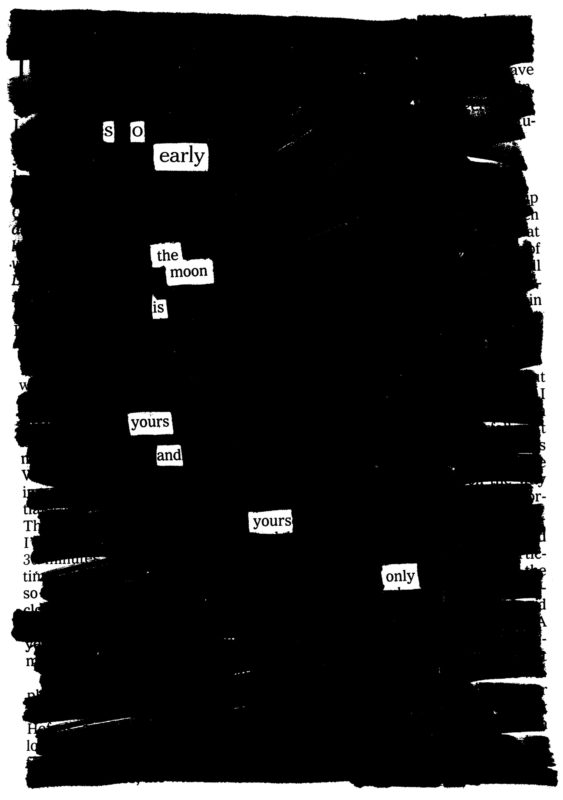
Look at something long enough and you start seeing it everywhere.

Look at something long enough and you start seeing it everywhere.

1) the full moon can be glorious, but it’s really the moon phasing in and out that is the most interesting to me
2) morning moons sometimes beat evening moons, especially when they hang big and low by the horizon and startle you when you turn a corner or come out from under the shade of a tree

Alternative Moons is a book of moon photos with a surprising twist: the moons are actually pancakes.
Kelli Anderson posted this flip-through on her twitter:
“Alternate Moons”, a completely gorgeous photography book by Robert Pufleb (that completely disguises the fact that its subject matter is pancakes.) ?? pic.twitter.com/gusI9IKJ90
— kelli anderson (@kellianderson) September 22, 2018
At the end of the book is a recipe for cooking up your own batch of moons.
I immediately felt them akin to my grounds galaxies — photos of coffee grounds on my kitchen counter, manipulated in the Photoshop Express iOS app and Instagram:

I love making these images during breakfast — thinking about the cosmos in the most mundane, domestic, earliest moments of the day…
To see a World in a Grain of Sand
And a Heaven in a Wild Flower
Hold Infinity in the palm of your hand
And Eternity in an hour
(There’s a good flour/flower pun there, but I’ll leave it.)

A reader wrote in to tell me my pictures of the moon through my new telescope were beautiful and all, but the moon was upside down. Indeed! When you look through a Dobsonian telescope the image you see is upside down because the mirror in the bottom is curved, as is explained in this video, with a kitchen spoon, some sticks, and a piece of foam:
I didn’t bother altering the image of the moon in the post, because I wanted to show it as it looked through my viewfinder.
I’m reminded of Betty Edwards’ book, Drawing on the Right Side of the Brain, which includes an exercise that asks the drawer to draw something upside down:
Familiar things do not look the same upside down. We automatically assign a top, bottom, and sides to the things we perceive, and we expect to see things oriented in the usual way – that is, the right side up. For, in upright orientation, we can recognize familiar things, name them, and categorize them by matching what we see with our stored memories and concepts.
When an image is upside down, the visual cues don’t match. The message is strange, and the brain becomes confused.
What you do, when you turn something upside down, is make it strange — when your brain doesn’t know exactly what it is that you’re looking at, you start to really look at the thing and see it with “fresh” eyes.
This, by the way, is exactly what a camera obscura does. Here’s photographer Abelardo Morell demonstrating his technique:
(A fabulous read on art and optics is David Hockney’s Secret Knowledge.)
As Paul Valéry put it (paraphrased for the title of Weschler’s book on artist Robert Irwin): “To see is to forget the name of the thing one sees.”
This site participates in the Amazon Affiliates program, the proceeds of which keep it free for anyone to read.